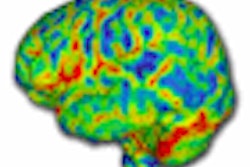
NEW YORK (Reuters Health), Aug 12 - Radiation exposure can be reduced using dual-source CT instead of 16- or 64-slice CT for coronary angiography, but only if dose optimization protocols are used, according to a report in the August 15 issue of Heart.
By reducing the number of coronary segments that cannot be assessed because of heart motion at higher heart rates, dual-source CT should significantly reduce dose exposure, the authors explain, but this has not been confirmed.
Dr. J. Rixe from Kerckhoff Heart Center, Bad Nauheim, Germany, and colleagues compared the effective radiation dose estimates using different dual-source CT protocols with those of 16- and 64-slice multidetector CT in 292 patients undergoing CT coronary angiography.
Overall, the mean estimated radiation dose of all patients investigated on a dual-source CT scanner (11.4 mSv) was higher than the dose of patients investigated on a 16-slice multidetector CT (9.8 mSv) or on a 64-slice multidetector CT (8.6 mSv), the authors report.
Reducing the tube voltage of dual-source CT to 100 kV, using a narrow electrocardiogram pulsing window of 110 msec in the diastolic phase, and using a minimum current of 4% of the maximal tube current level reduced the effective radiation dose to 3.8 mSv, which was significantly lower than the calculated radiation doses of all other patient subgroups examined on a dual-source scanner.
All patients examined under a 100-kV dual-source CT protocol received significantly lower estimated radiation doses than did patients scanned on 16- or 64-slice multidetector scanners, regardless of heart rate, the investigators say.
"This study demonstrates that dual-source CT has the potential to reduce radiation dose exposure, if the scan protocol is adjusted appropriately," the researchers conclude.
"Dose optimization thus remains a highly important concern that must be dealt with by cardiologists, radiologists, and manufacturers of multidetector CT scanners," the authors add.
Heart 2009;95:1337-1342.
Last Updated: 2009-08-11 17:55:45 -0400 (Reuters Health)
Related Reading
Dual-source coronary CTA has advantages over 64-slice, August 7, 2009
Dual-source CTA turns in mixed results for coronary stenoses, July 30, 2009
Copyright © 2009 Reuters Limited. All rights reserved. Republication or redistribution of Reuters content, including by framing or similar means, is expressly prohibited without the prior written consent of Reuters. Reuters shall not be liable for any errors or delays in the content, or for any actions taken in reliance thereon. Reuters and the Reuters sphere logo are registered trademarks and trademarks of the Reuters group of companies around the world.

















